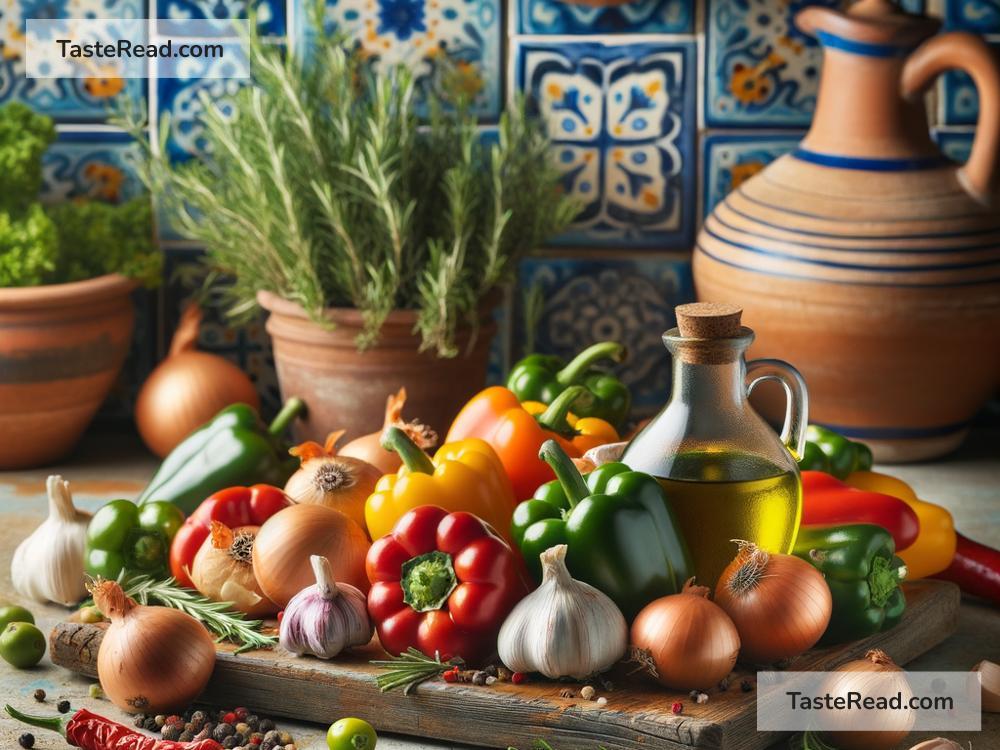How Bell Peppers Became a Staple in Mediterranean Diets
Bell peppers, with their vibrant colors and crunchy texture, are a common sight in Mediterranean kitchens. These sweet and versatile vegetables are used in countless dishes, from refreshing salads to hearty stews. But bell peppers did not always belong to the Mediterranean region. Their journey to becoming a staple in Mediterranean diets is a fascinating tale of discovery, trade, and culinary creativity.
Where Bell Peppers Came From
Bell peppers originally came from Central and South America. They are part of the Capsicum family, a group of plants that includes mild bell peppers, spicy chili peppers, and other varieties. Thousands of years ago, indigenous peoples in regions like Mexico and Peru cultivated peppers for food and medicine. Bell peppers were prized for their sweet flavor, bright colors, and ability to thrive in warm climates.
This changed in the late 15th century when European explorers traveled to the Americas. Christopher Columbus and other adventurers found peppers during their expeditions and brought them back to Europe. Bell peppers were one of many foods introduced to Europe during this period, alongside tomatoes, potatoes, and corn. These foods are now common in European cooking, but they required time to be accepted and integrated into traditional diets.
How Bell Peppers Reached the Mediterranean
Once bell peppers arrived in Europe, they quickly caught the attention of farmers and cooks. Their mild taste made them appealing to people who were less accustomed to spicy flavors. They were easy to grow in the Mediterranean region, where the warm, sunny climate allowed them to thrive.
Trade played a big role in spreading bell peppers throughout the region. During the 16th and 17th centuries, Mediterranean countries like Spain and Italy were major hubs for trade with the Americas. Traders brought peppers to these countries, where they were planted in local fields and gardens. Over time, bell peppers spread to other Mediterranean countries, including Greece, Turkey, and Morocco.
As bell peppers became more available, farmers began to develop different varieties. For example, sweet peppers with thicker flesh and mild flavors became popular, while thinner types were often dried or ground into paprika. Mediterranean farmers valued the crop for its productivity and its adaptability to various cooking methods.
Bell Peppers in Mediterranean Cooking
Today, bell peppers are a key ingredient in Mediterranean cooking, used in dishes that highlight their sweetness and crunchy texture. They are featured in many beloved recipes, such as:
-
Stuffed Bell Peppers: In countries like Greece and Turkey, bell peppers are often stuffed with rice, ground meat, herbs, and spices. This dish, known as “gemista” in Greece, showcases the versatility of bell peppers as a flavorful container for other delicious ingredients.
-
Ratatouille: A classic French dish originating from Provence, ratatouille combines bell peppers with zucchini, eggplant, tomatoes, and onions. This colorful vegetable stew is a celebration of fresh, local produce and Mediterranean flavors.
-
Pepper-Based Sauces: In Spain, roasted bell peppers are blended with almonds, garlic, and olive oil to make “romesco” sauce, a flavorful accompaniment to fish, meat, or grilled vegetables.
-
Grilled or Roasted Peppers: Bell peppers are often grilled or roasted and drizzled with olive oil. This simple preparation enhances their natural sweetness and smokiness, making them perfect for appetizers or side dishes.
-
Salads: Bell peppers are commonly added to fresh salads, such as Italian caprese salads or Moroccan chopped salads, where they add color, crunch, and taste.
Bell peppers are not just an ingredient; they embody the essence of the Mediterranean diet. This diet focuses on fresh vegetables, healthy fats like olive oil, and herbs and spices to create flavorful and nutritious meals. Bell peppers, rich in vitamins like A and C and low in calories, perfectly align with these principles. They are also an excellent source of antioxidants, which promote overall health and well-being.
A Symbol of Connection and Adaptation
The story of bell peppers in the Mediterranean is much more than just food history. It is a reminder of how cultures adapt and grow through trade and exchange. Bell peppers traveled thousands of miles from their origins in the Americas to the Mediterranean, crossing oceans and borders. As they adapted to new climates, they were embraced by local cuisines, enriching the world’s food traditions in the process.
Today, bell peppers hold a special place in Mediterranean diets, adding color and flavor to homes and restaurants. When cooking with bell peppers, Mediterranean people honor both their history and their versatility. Whether enjoyed roasted, stuffed, or fresh, bell peppers continue to be a timeless and treasured part of Mediterranean cooking.
Conclusion
Bell peppers may have started their journey far away, but they’ve found a lasting home in the Mediterranean. Their ability to blend into a variety of dishes, coupled with their nutritional value, has cemented their place in this region’s cuisine. So, the next time you enjoy a Mediterranean dish featuring bell peppers, take a moment to appreciate how this humble vegetable traveled across continents to become the vibrant staple it is today.


